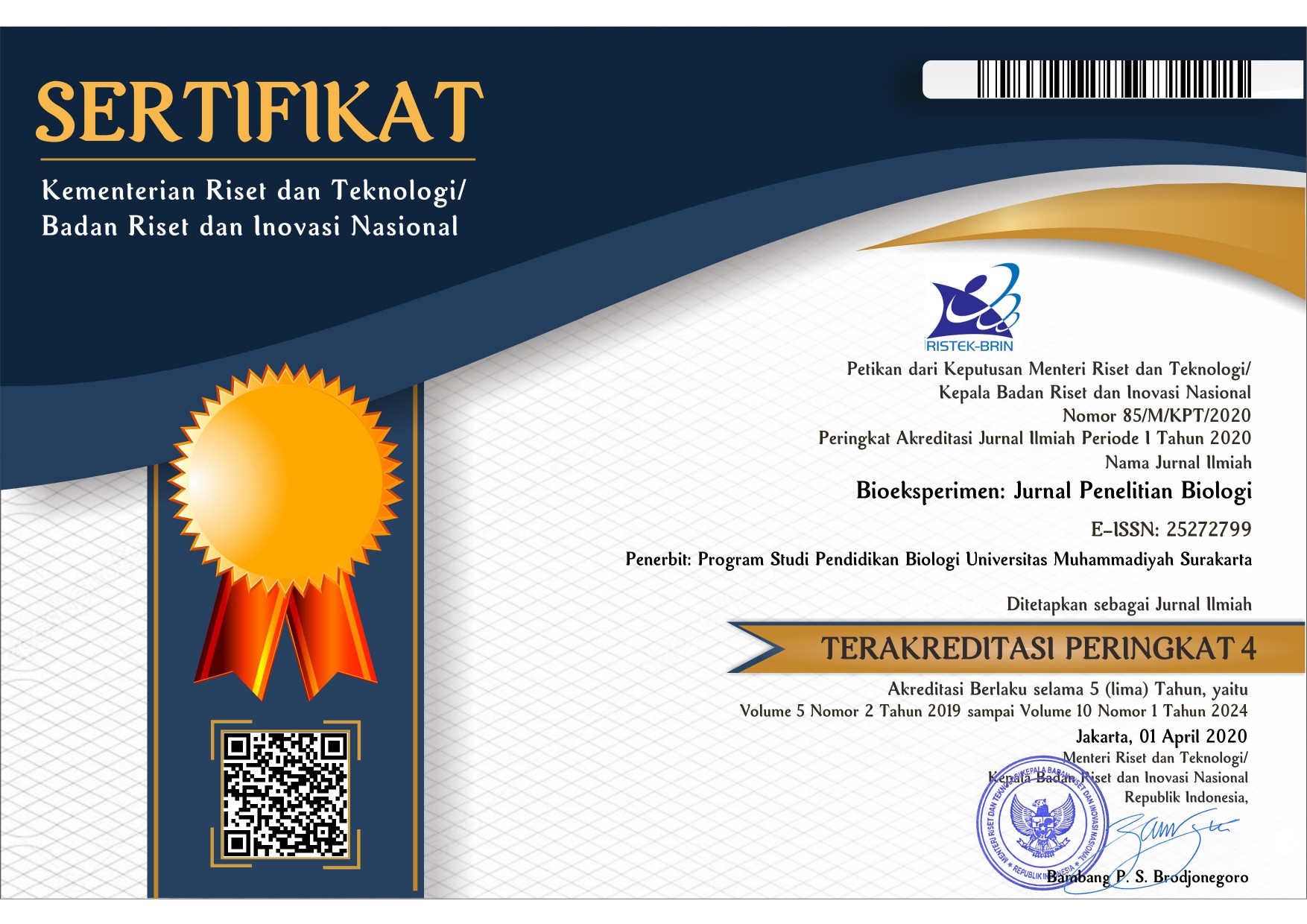Optimasi Metode 1H-NMR Profiling pada Rimpang Kunyit (Curcuma domestica)
Caroline Dwiseptianti(1*), Febri Adi Susanto(2), Yekti Asih Purwestri(3), Tri Rini Nuringtyas(4)(1) Laboratorium Biokimia, Fakultas Biologi, Universitas Gadjah Mada
(2) Laboratorium Biokimia, Fakultas Biologi, Universitas Gadjah Mada
(3) Laboratorium Biokimia, Fakultas Biologi, Universitas Gadjah Mada
(4) Laboratorium Biokimia, Fakultas Biologi, Universitas Gadjah Mada
(*) Corresponding Author
Abstract
Keywords
Full Text:
PDFReferences
Henkel, T., Brunne, R., H., M., & Reichel, F. (1999). Statistical Investigation into the Structural Complementarity of Natural Products and Synthetic Compounds. Angew. Chem., Int. Ed, Vol 38(5): p 643-647.
Kim, E., Kwon, J., Park, S., Park, C., Seo, Y., Shin, H., . . . Hwang, D. R. (2011). Metabolite profiling of Angelica gigas from different geographical origin using 1H NMR and UPLC-MS analyses. J Agric Food Chem., Vol 59: p 8806-8815.
Kim, H., Choi, Y., & Verpoorte, R. (2010). Protocol NMR-based metabolomic analysis of plants. Nature Publishing Group, Vol 5(3): p 536-548.
Prakash, L., Satyan, K., & S.Majeed. (2003). Multifunctional Ingredients. The Novel Face of Natural, Cosmetics and Toiletries, Vol 118(11):p 41-46.
Prasetya, D., & Yuliani, S. (2014). Aktivitas Ekstrak Rimpang Remulawak (Curcuma xanthorrhiza roxb.) pada Radial Arm Maze dan Pasive Avoidance Test Tikus Model Demensia. Pharmaҫiana, 4(2):157-164, Vol 4(2):p 157-164.
Pribadi, E. (2009). Pasokan dan permintaan tanaman obat Indonesia serta arah penelitian dan pengembangannya. Perspektif. 8: 52-64. Perspektif, Vol 8: p 52-64.
Xie, P., & Leung, A. (2009). Understanding the traditional aspect of Chinese medicine in order to achieve meaningful quality control of Chinese materia medica. J Chromatogr A, Vol 1216(11): p 1933-1940.
Article Metrics
Abstract view(s): 904 time(s)PDF: 937 time(s)
Refbacks
- There are currently no refbacks.








